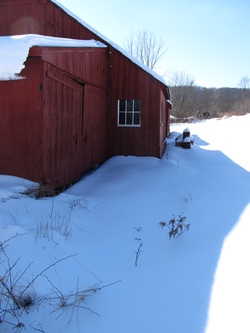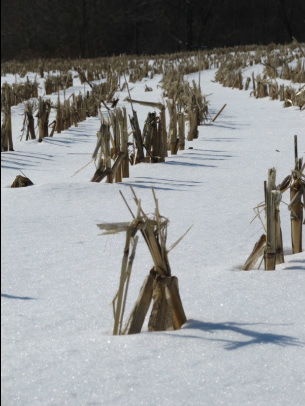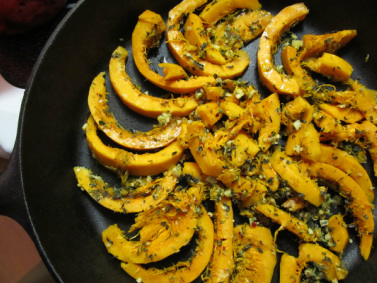 Dear Friends, It is past 11 p.m. on a Sunday night in early-to-mid February, but it seemed urgent, lying in bed with feet too cold to fall asleep, that I look at the planting calendar and decide, based on any number of seemingly unrelated factors (planetary alignment, my niece’s fifth birthday, harvest schedules, when the greenhouse heat would be turned on), exactly what day we would seed scallions, spring onions, and parsley: the first sets of seeds to be sown in the greenhouse in 2 (yikes!) weeks. I seem to be taking this night to remind myself, in an orderly mental fashion, of all the things I have possibly procrastinated on over the past month, each of which may or may not catch-up with me in a haunting and not altogether easy way over the coming month. My mind is overwhelmingly occupied, alternating between my obsessive account of the work to be accomplished in the next 2, 4, and 6 week increments, and an ongoing reverberation of the word saturated. Saturated. I don’t really know why. Merriam Webster Online: Saturated: unable to absorb or dissolve any more. Of a color: PURE. This sums it up: unable to take on (absorb) any more than what I have, unable to let any of it go (dissolve). Then, in the pigment of a color: pure, dense, full, immense; looking into a sky so blue it seems to encompass you; feet crunching through snow so white it swallows you. To be saturated is to be heavy, stifled, and yet so full, like a color thick and rich to my senses.  As February dawned, and “blogpost” entered my To-Do list, I searched for that thematic element which would capture whatever truth was surrounding the plight and pleasures of Good Work Farm this mid-winter (or is it end of winter?). It seems no other meditation quite sums up our work these days, in an all-encompassing way, as the intersection of land and community. For what (and whom) do we do our work? On what ground will this work be done? On what piece of earth shall we land? The tangibles of this involve the invitation to new members to join our CSA; and the frustrating, demoralizing, and omnipresent work to secure a lease—cross t’s, dot i’s, and jump through, on, or over any hoop, hell, or highwater which might stand in our way. The theoretical endeavor toward land and community is empowering and joyful—a movement of assurance. In his essay Good Farming and the Public Good, Donald Worster poses the question: “What is the public good in agriculture and what kind of farming will most likely achieve it?” The second part of that question is an easy one for me: we know (or spend every day learning) what practices we will use, and work toward, to farm well. Wendell Berry calls this “kind of farming” good farming. What is the public good of agriculture?—so many phrases pop into my mind: land preservation, ecosystem resilience, human health (mental, spiritual, emotional). In order for farming to be good for the public, it must achieve more than providing cheap or abundant food, it must provide food which is nourishing, fun, delightful; it must care for land that is left open for the nourishment, fun, and delight of a community; it must gather people to one another to celebrate and mourn, to harvest, to acknowledge and share in good-ness, to saturate themselves in work and play and food and world. Wendell Berry writes, “Human continuity is virtually synonymous with good farming, and good farming obviously must outlast the life of any good farmer. For it to do this… we must have community. Without community, the good work of a single farmer or a single family will not mean much or last long. For good farming to last, it must occur in a good farming community—that is, a neighborhood of people who know each other, who understand their mutual dependencies, and who place a proper value on good farming.” In Good Farming and Mutual Dependencies, Lisa and Anton … What else have we been doing with our snow days? You’ll notice that the website and 2014 Commitment Form got a facelift, thanks to our good friend and designer Matt who has dedicated himself to helping GWF align the content of our work with a proper face to portray in image what we aim to achieve in deed. We’re still involved in the daily work of securing those lasting partnerships of land and horses to find both place and traction for our farm. Although our CSA Membership grows each week, we continue to seek new members to join us in 2014, and encourage folks to pass our information along to friends and neighbors who are looking to eat some delicious vegetables all season long. (Contact us if you can help us market by hanging a flier in your place of work or worship!)  Pumpkin Crunchies! I made these using our last mini baby pam pumpkin, so small it fit in my hands. This served two as a generous side-dish. You will need:
1 pumpkin or winter squash, peeled, de-seeded, and cut into 1/3" to 1/2" slices 2-3 T (be generous!) of a blend of dried herbs (I used a grind of fennel, oregano, thyme, black pepper, red pepper flakes, coarse sea salt, rosemary, sage, and dried onion) 2 cloves fresh garlic, minced 2 T olive oil a few gratings of a hard cheese (like parm or an aged cheddar/ gouda) with a micro-plane or other fine grater Pre-heat the oven to 400 degrees. Toss pumpkin slivers in herbs (including salt and black pepper), garlic, and olive oil. Use hands to ensure pumpkins are properly coated. Lay out in a single sheet on a caste iron or baking sheet. Roast at 400 for about 15-20 minutes. Turn over (the bottoms will brown) and roast for an additional 10-15 minutes, or until flesh is soft (test with a fork, or by tasting a bite). Remove from oven; use a fine grater to grate a small amount of cheese over the top. Cheese will melt immediately, forming crispy morsels of flavor atop this delightful dish.
3 Comments
|
Archives
December 2019
FarmersAnton M. Shannon Categories
All
|

 RSS Feed
RSS Feed